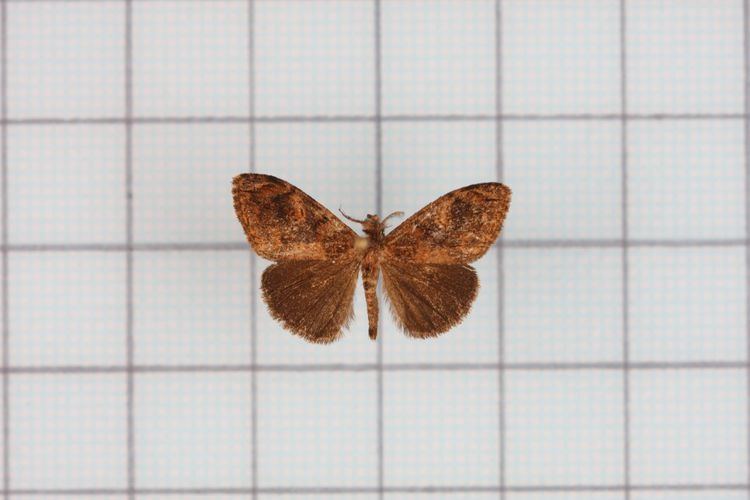Order Butterflies and moths | Subphylum Hexapoda Rank Species | |
 | ||
Similar Orgyia, Butterflies and moths, Artaxa subflava, Calliteara grotei, Lymantria xylina | ||
The cocoa tussock moth or Hevea tussock moth (Orgyia postica) is a species of moth of the Lymantriinae subfamily of family Erebidae found from the oriental tropics of India, Sri Lanka, Myanmar, Borneo, Java, and New Guinea.
Contents
Description
The wingspan is 20–30 mm for males. In the male, the head, thorax, and abdomen are brownish in color. Fore wings are brown with an indistinct oblique sub-basal line. Waved antemedial and postmedial lines approach each other at the lower angle of the cell. The area between them is slightly tinged with bluish grey and with a waved dark line edged with white on each side of the discocellulars. Two indistinct waved submarginal lines are present. The apex is slightly tinged with grey and with some subapical dark streaks. Hind wings are dark brown. The female is wingless.
Larvae are yellowish in color, clothed sparsely with brown hair. One dorsal and two lateral brown bands are seen. Paired tufts of hair are on the first and eleventh somites projecting forward and backward. Lateral tufts of grey hair project from the fourth and fifth somites. Dorsal tufts of yellow hair are on the fourth to seventh somites. The head is red in color. the pPupa is stout; in males, it is glossy black, with numerous short, small tufts of hairs. Eggs are pillbox-shaped, and pale whitish-brown in color, with a darker ring encircling a depressed top.
Ecology
Adult males are on wing year round. The name Orgyia is because the larvae have been recorded on a wide range of species, including Buchanania, Mangifera, Durio, Ochroma, Casuarina, Terminalia, Shorea, Hevea, Ricinus, Pelargonium, Cinnamomum, Acacia, Albizia, Caesalpina, Cajanus, Cassia, Dalbergia, Erythrina, Pithecellobium, Pterocarpus, Sesbania, Xylia, Lagerstroemia, Eucalyptus, Tristania, Zizyphus, Malus, Coffea, Citrus, Santalum, Dimocarpus, Litchi, Nephelium, Theobroma, Camellia, Grewia, and Tectona. The head, legs, and prolegs are pale red. The body is longitudinally banded in dark brown and pale yellow. The four dorsal brushes are pale yellow.
The parasitoid wasps of Telenomus are known to attacks the eggs of this moth.
